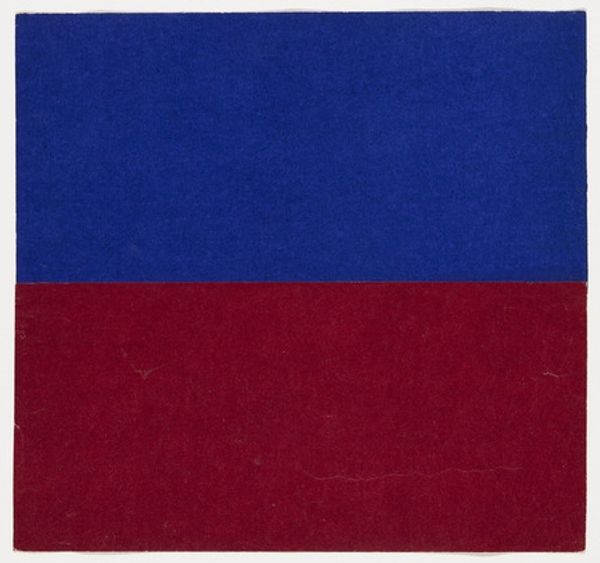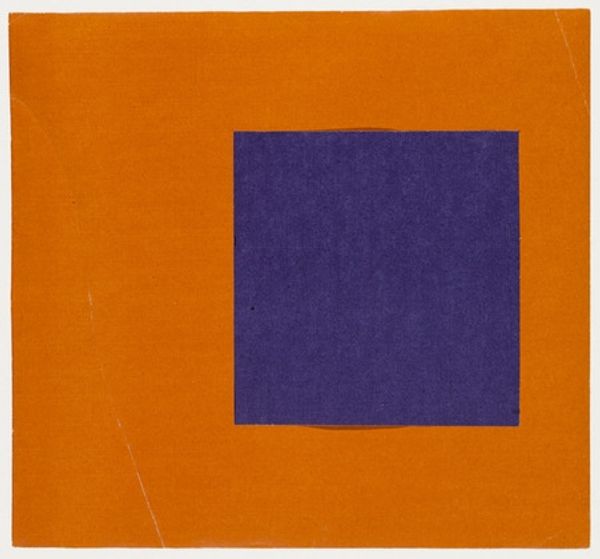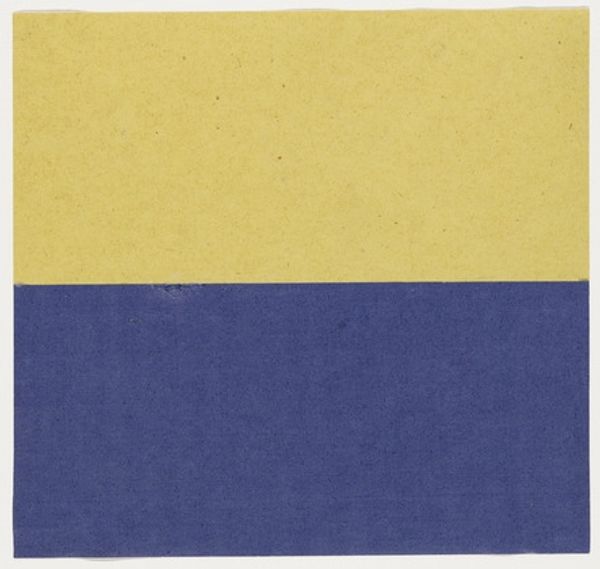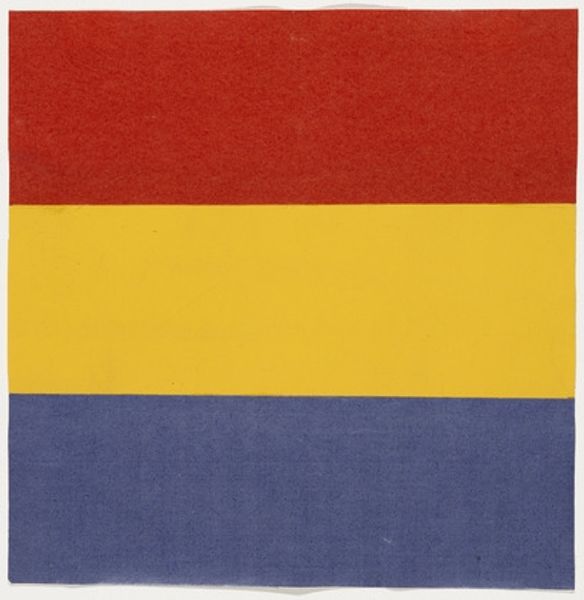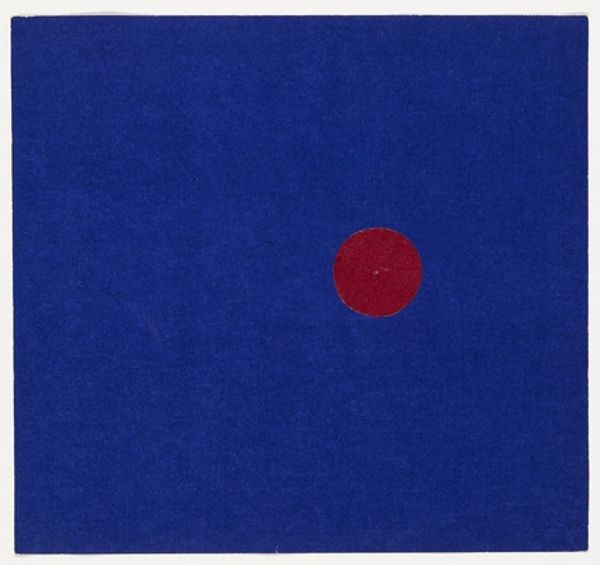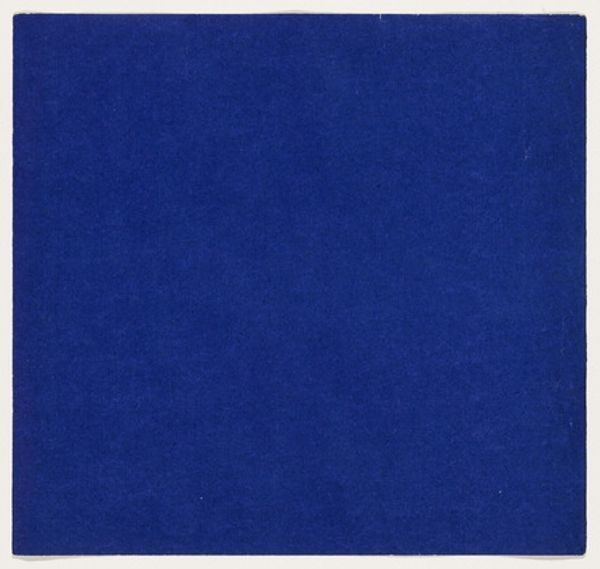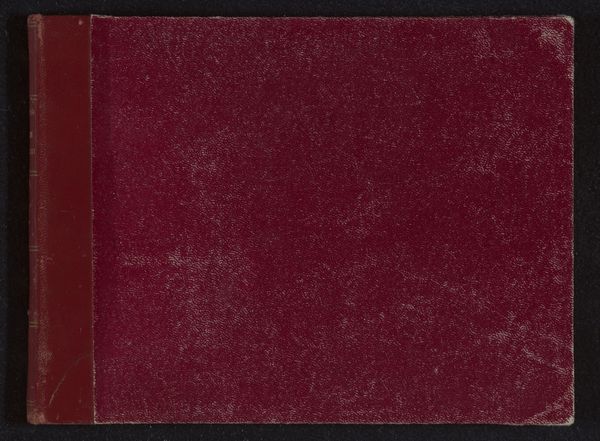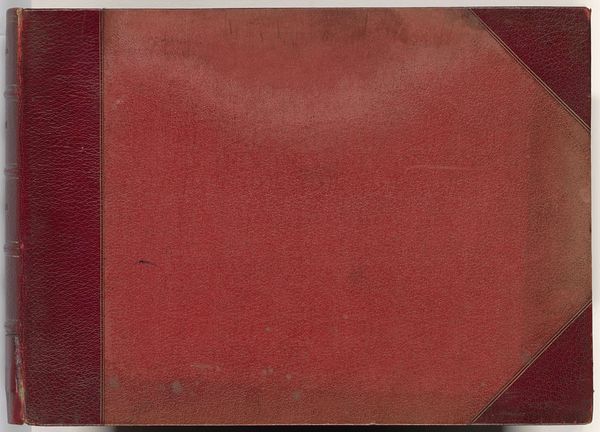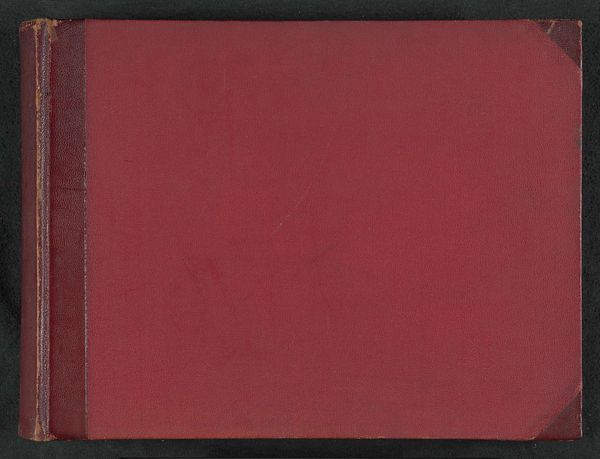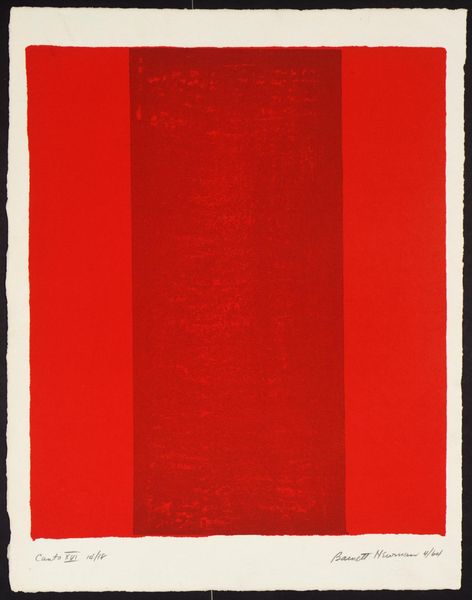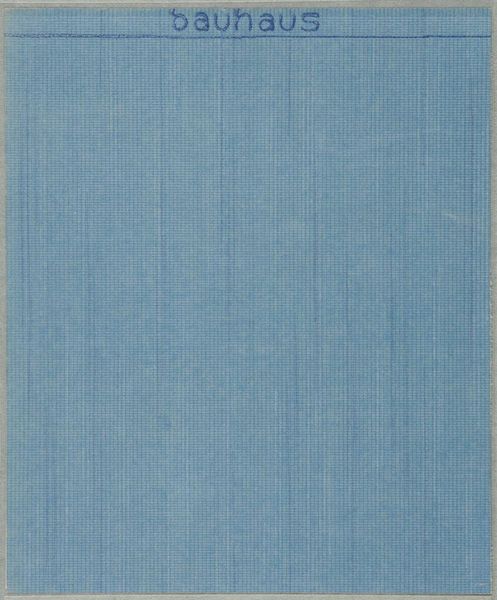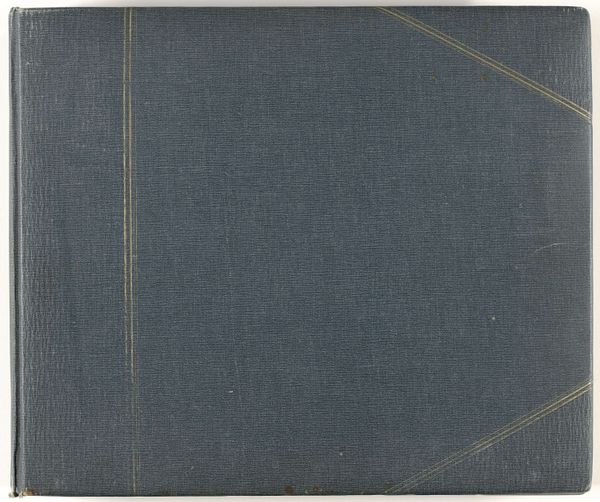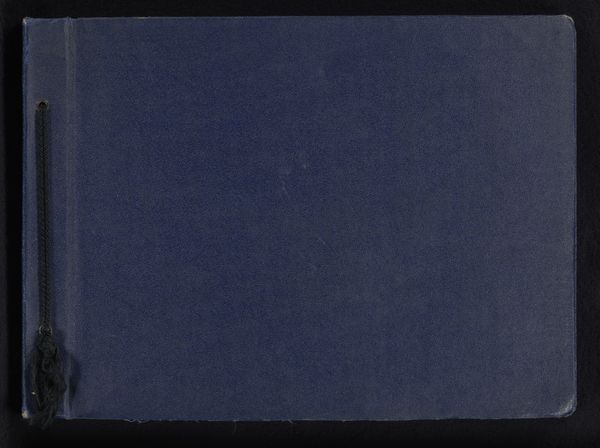
painting
#
painting
#
minimalism
#
colour-field-painting
#
form
#
rectangle
#
geometric
#
abstraction
#
line
Copyright: (c) Ellsworth Kelly, all rights reserved
Curator: Ellsworth Kelly's "Blue and Red from the series Line Form Color," painted in 1951, presents us with a study in pure chromatic interaction. Editor: Immediately, the tension strikes me—that horizontal azure bar cleaving a field of deep burgundy, it almost feels like a battle for visual dominance. What are your first impressions? Curator: I am captivated by the absolute simplicity, the unmodulated surfaces. Note how Kelly allows the relationship between the hues and shapes to generate all the work's energy. The placement of the blue, precisely bisecting the composition, lends itself to a reading of geometric perfection. Editor: True, the visual relationship is important but so is the historical context: remember that Kelly created this after serving in WWII, where he was part of the Ghost Army camouflage unit. Given that history, how does color act as a form of deceptive aesthetics? What are we asked to consider or conceal? Curator: Ah, that military association offers a potentially rich, biographical framework. Yet, even devoid of context, there is an irreducible aesthetic fact here. The red vibrates against the cool reserve of the blue. Editor: Certainly. And isn’t it more impactful when we see how Minimalism had social implications during the McCarthy era, where it challenged dominant representational forms? What this act may conceal about society might be as relevant as formal qualities of the artwork. Curator: Interesting point about challenging representational conventions. The reductive nature of Kelly's approach aligns, aesthetically, with a yearning for something fundamental and self-evident within the formal language of painting itself. Editor: But this form of rebellion also speaks to a kind of erasure; the purging away of the representational can echo erasures in cultural memory or socio-political narratives. Kelly perhaps makes room for unspoken truths—in that sense, these blocks function beyond sheer colour. Curator: It strikes me now how the density of pigment invites contemplation. It seems, at its heart, that Kelly allows for an elementary dialectic within pictorial space. Editor: An astute and fascinating point to end our short dive into Kelly's painting. Hopefully this gave a new layer of appreciation to the audience.
Comments
No comments
Be the first to comment and join the conversation on the ultimate creative platform.
